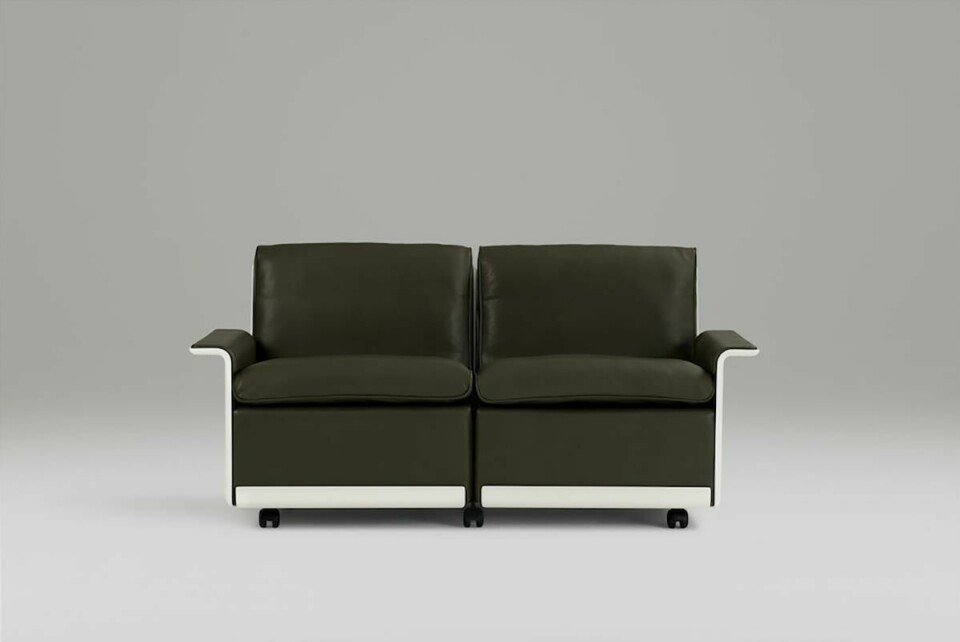
What can car designers learn from Dieter Rams?
Simplicity, purity and honesty in design: can car designers learn from Rams’ product design philosophy?
German industrial designer Dieter Rams [born in Wiesbaden, Germany, 1932] is considered one of the most influential figures in product design. Much of his work for the Braun and Vitsoe brands has gained iconic status and worldwide recognition; from radios and calculators to shelving units and sofas, he has been responsible for the design of a wide variety of beautifully thought-out products. His approach to design helped to transform Braun into a global manufacturing giant, and he has since been cited as a major influence on product design at modern mega-brands such as Apple, illustrating the timeless appeal of his work.

However, Rams has not turned his attention to arguably one of the most iconic consumer products of all: the car. Yet does his work and philosophy have any relevance for automotive design? With a display of his modular furniture currently running at the Vitra Design Museum in Weil am Rhein, Germany, we take a look.

Vitsoe 620 Chair Programme
Rams’ creations have been crafted in accordance to his famous ’10 principles for good design’. These centre around functional as well as aesthetic criteria, incorporating technological innovation, quality of execution, clarity of structure, thoroughness and honesty, environmental friendliness, longevity, purity and simplicity.
Traditionally the car industry has followed its own path when it comes to design, with rather minimal influence from other disciplines: understandable, given the many and varied roles which the car must fulfil, and the fine balance it must strike between function and emotion, practicality and desirability. However, this fine balance of form and function can become skewed, with car designers increasingly focusing on the short-term emotional appeal of the product – often to the detriment of its function and ‘honesty’.

Braun T52 radio (1962)
Rams’ work has been intentionally minimalist and stark: he has stripped out all unnecessary distractions and gimmicks in order to make his products intuitive and self-explanatory to the user. Nowhere should this approach be more relevant than in a car interior – the control interface of a potentially lethal object, travelling at high speed. Yet over-complicated cockpits, gadgets and gimmicks have proved in everyday use to be at best, a frustration, and at worst, potentially dangerous.
BMW’s i-Drive control system was an early offender, though since refined; Lexus interiors now feature a track pad for scrolling through infotainment menus whilst on the move, and in the latest Porsche Panamera, even the central air vents must be adjusted from a touchscreen, rather than by a simple manual control. Manufacturers including Tesla have gone even further and replaced the entire interface with a giant touchscreen, potentially distracting compared to physical buttons and switches which can be used relatively easily and intuitively without taking eyes off the road.

Braun SK2 radio
However, amongst today’s tech-heavy vehicles, the Audi TT stands out: with its minimalist heater controls and a single display screen replacing the dials, its interface recalls Rams’ SK2 radio in its simplicity – a great example of Rams’ dictum “less but better”.
Rams also declared that “good design is honest” and “does not attempt to manipulate the consumer with promises that cannot be kept”. The current trend for oversized, fake air intakes is counter to this, hinting at more power and performance than is on offer. See also faux ‘diffusers’ on hot hatches, the Range Rover’s side ‘gills’, and perhaps also ‘hidden’ rear door handles – or perhaps worst of all, SUV and crossover-style vehicles which are in fact two-wheel-drive only.
And the rise of the SUV and crossover as default family transport also seems to run counter to the Rams philosophy. He states that “good design is unobtrusive”, but the modern SUV is defined by its imposing physical bulk. Alongside this, cars in all genres have increased in size over the years: this, combined with higher belt-lines, small glass areas and thicker roof pillars, has created a generation of vehicles whose shape is difficult to judge and manoeuvre, necessitating new technology such as rear-view cameras and autonomous parking. Added complexity, diminuished usability, increased visual clutter: this surely goes against Rams’ rules for a better, purer, end product. We’d recommend a revisiting of his ‘10 commandments’ for good design.




